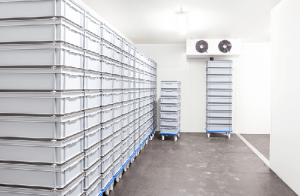Maintaining Quality: Inside Cold Storage Solutions
The Importance of Cold Storage
Cold storage plays a crucial role in preserving the quality and safety of perishable goods throughout their supply chain journey. From farm to table, maintaining the right temperature and conditions is essential to prevent spoilage, maintain nutritional value, and ensure consumer safety. This article delves into the key factors and best practices for maintaining quality within cold storage solutions. Maintaining Quality: Inside Cold Storage Solutions
Temperature Control and Monitoring
Precise Temperature Regulation
One of the primary challenges in cold storage is maintaining precise temperature control. Different perishable items require specific temperature ranges to remain fresh. For example, fruits and vegetables typically require temperatures slightly above freezing to maintain crispness and nutritional content. On the other hand, frozen foods like meat and seafood need temperatures well below freezing to prevent bacterial growth and freezer burn.
Advanced Monitoring Systems
To ensure temperatures remain consistent, advanced monitoring systems are crucial. These systems often include sensors placed strategically throughout the storage facility to track temperatures in real-time. Automated alerts can notify personnel of any deviations from the optimal range, allowing for immediate corrective action. Modern cold storage facilities may also utilize IoT (Internet of Things) technology to provide remote monitoring capabilities, ensuring continuous oversight even outside regular business hours.
Humidity Control
Importance of Humidity Levels
In addition to temperature, humidity levels play a critical role in cold storage environments. Excess humidity can lead to condensation, which can compromise the quality of stored goods by promoting mold growth or accelerating deterioration. Conversely, insufficient humidity can cause products like fruits and vegetables to lose moisture, leading to dehydration and loss of texture.

Humidity Management Techniques
Effective humidity management involves utilizing dehumidifiers and humidifiers to maintain optimal levels based on the specific requirements of stored items. For example, in meat storage, controlling humidity helps prevent surface moisture that can lead to bacterial growth. In contrast, in produce storage, maintaining higher humidity levels can help extend shelf life by reducing dehydration.
Air Circulation and Ventilation
Ensuring Proper Airflow
Proper air circulation and ventilation are essential to distribute cold air evenly throughout the storage facility. This helps maintain uniform temperatures and prevents hot spots where temperatures could rise above safe levels. Inadequate airflow can also lead to pockets of stagnant air, increasing the risk of spoilage and compromising product quality.
Optimizing Airflow Patterns
Optimizing airflow patterns involves strategically placing fans and vents to promote consistent circulation. Cold storage facilities often employ airflow simulation tools to design layouts that minimize energy consumption while maximizing efficiency. By ensuring that cold air reaches every corner of the storage space, these systems help maintain uniform temperatures and preserve product integrity.
Sanitation and Hygiene Practices
Cleanliness Standards
Maintaining strict sanitation and hygiene practices is critical in cold storage facilities to prevent cross-contamination and ensure product safety. Regular cleaning schedules, using approved disinfectants, and implementing procedures for handling spills and waste are essential to minimize the risk of bacterial growth and maintain compliance with food safety regulations.
Employee Training
Proper training of personnel in hygiene practices and adherence to protocols is equally vital. Employees should be educated on the importance of maintaining cleanliness in cold storage environments and trained to identify potential hazards that could compromise product quality. This includes understanding the proper use of protective equipment, such as gloves and hair nets, to prevent contamination.
Emergency Preparedness and Backup Systems
Contingency Planning
Despite rigorous maintenance and monitoring, unexpected equipment failures or power outages can occur. Having robust contingency plans in place is crucial to minimize downtime and prevent loss of inventory. This may include backup power generators, contingency refrigeration units, or alternative storage arrangements to temporarily relocate perishable goods if necessary.
Regular Maintenance Checks
Regular maintenance of equipment and infrastructure is essential to preemptively identify potential issues before they escalate into emergencies. Scheduled inspections of refrigeration units, HVAC systems, and backup generators help ensure they are functioning optimally. Additionally, proactive repairs and upgrades based on manufacturer recommendations can extend the lifespan of equipment and improve overall reliability.
Conclusion
Ensuring Quality and Safety
In conclusion, maintaining quality in cold storage solutions requires a comprehensive approach that encompasses precise temperature control, humidity management, proper airflow, sanitation practices, and contingency planning. By adhering to these best practices, cold storage facilities can uphold the integrity and safety of perishable goods from the moment they enter storage until they reach the end consumer. Investing in state-of-the-art technology and rigorous maintenance not only enhances operational efficiency but also strengthens consumer trust in the quality and freshness of the products they purchase.

Recent Comments